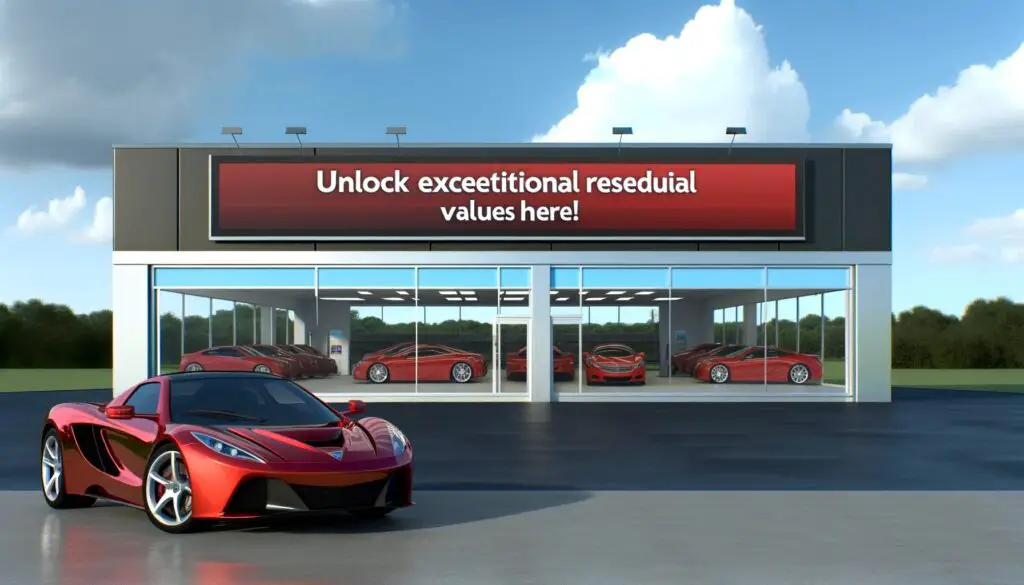In the realm of car buying, effective negotiation is paramount. At our fingertips lies a plethora of strategies designed to empower consumers and ensure they secure the best possible deal. In this comprehensive guide, we delve deep into the nuances of the car buying process, equipping you with the knowledge and tactics needed to emerge victorious in your next negotiation.
Understanding the Market
Researching Average Prices and Market Trends
Importance of Research
Before making any car purchase, it’s essential to conduct thorough research on average car prices and market trends. This research empowers buyers to make informed decisions and negotiate effectively.
Reliable Sources
- Kelley Blue Book (KBB): KBB is a trusted resource for car buyers, providing comprehensive information on car prices, including new and used vehicle values.
- Edmunds: Edmunds offers a wealth of resources, including pricing guides, expert reviews, and comparison tools, allowing buyers to assess the fair market value of different vehicles.
Utilizing Tools and Features
- Price Estimators: Both KBB and Edmunds offer price estimators that take into account factors such as make, model, year, mileage, and condition to provide accurate pricing information.
- Market Trends: These platforms also track market trends, allowing buyers to gauge whether prices are rising or falling for specific vehicles.
Benefits of Research
- Empowered Negotiation: Armed with knowledge of average prices, buyers can negotiate confidently with dealerships, knowing what constitutes a fair offer.
- Budget Planning: Researching average prices helps buyers set realistic budgets and avoid overpaying for vehicles.
The Impact of Supply and Demand on Car Pricing
Understanding Supply and Demand Dynamics
Supply and demand play a significant role in determining car prices. When demand exceeds supply, prices tend to rise due to increased competition among buyers. Conversely, when supply exceeds demand, dealerships may lower prices to attract buyers and move inventory.
Factors Influencing Supply and Demand
- Seasonality: Car demand fluctuates throughout the year, with certain seasons seeing higher demand due to factors like weather conditions or holiday promotions.
- Economic Conditions: Economic factors such as unemployment rates, interest rates, and consumer confidence can impact car buying behavior and, consequently, supply and demand dynamics.
Market Conditions and Pricing Strategies
- High Demand: During periods of high demand, dealerships may be less willing to negotiate on price, as they can sell vehicles quickly at or near the asking price.
- Limited Supply: Limited supply, such as shortages of specific models or trim levels, can lead to higher prices and reduced negotiation flexibility for buyers.
Leveraging Market Knowledge in Negotiations
By staying informed about market conditions, buyers can leverage this knowledge during negotiations to secure better deals. For example, if a particular model is in high demand, buyers may need to act quickly or be prepared to pay a premium. Conversely, if supply exceeds demand, buyers have more bargaining power and can negotiate for lower prices or additional perks.
Setting a Budget and Sticking to It
Importance of Establishing a Budget
Setting a budget is the cornerstone of effective car buying. It provides a clear framework for decision-making and ensures financial responsibility throughout the purchasing process.
Steps to Establishing a Budget
- Assess Financial Situation: Evaluate your income, expenses, and savings to determine how much you can comfortably allocate towards a car purchase.
- Consider Additional Costs: Factor in expenses beyond the purchase price, such as taxes, registration fees, insurance premiums, and ongoing maintenance.
Benefits of Sticking to a Budget
- Financial Discipline: Adhering to a budget prevents impulsive spending and promotes responsible financial habits.
- Avoiding Overspending: By knowing your financial boundaries, you can resist the temptation to stretch beyond your means and potentially overextend yourself financially.
Strategies for Sticking to Your Budget
- Research Prices: Use online resources like Kelley Blue Book and Edmunds to research the average prices of vehicles you’re interested in, ensuring your budget aligns with market realities.
- Set a Firm Limit: Establish a maximum budget for your car purchase and commit to not exceeding it, even if pressured by sales tactics or enticing offers.
Identifying Your Needs vs. Wants in a Car
Importance of Prioritization
Distinguishing between needs and wants is crucial for making informed decisions and avoiding unnecessary expenditures. This clarity ensures that you prioritize features that are essential to your driving experience.
Evaluating Essential Features
- Safety: Consider safety features such as airbags, anti-lock brakes, stability control, and advanced driver assistance systems (ADAS) when assessing vehicle options.
- Reliability: Look for vehicles with a reputation for reliability and durability, minimizing the likelihood of costly repairs down the line.
Assessing Desirable Amenities
- Comfort: Features like heated seats, climate control, and advanced infotainment systems enhance driving comfort but may not be essential for all buyers.
- Luxury Upgrades: Optional extras such as leather upholstery, premium sound systems, and panoramic sunroofs add luxury and style but often come with a higher price tag.
Prioritizing Needs Over Wants
- Cost-Benefit Analysis: Evaluate the value proposition of each feature relative to its cost, prioritizing those that offer the most significant benefit for your budget.
- Flexibility: Be open to compromise and willing to forego certain amenities if they aren’t essential to your driving experience or financial goals.
Choosing Between New and Used Cars
Pros and Cons of New Cars
- Latest Features: New cars often come equipped with the latest technological advancements, including safety features, infotainment systems, and driver assistance technologies.
- Warranties: New vehicles typically come with manufacturer warranties that cover repair costs for a specified period, providing peace of mind against unexpected expenses.
Pros and Cons of Used Cars
- Better Value: Used cars generally offer better value for budget-conscious buyers, as they have already undergone depreciation and may be available at a lower price point compared to new models.
- Lower Insurance Costs: Insurance premiums for used cars are often lower than those for new vehicles, resulting in potential long-term savings on insurance expenses.
Assessing Priorities
Consider your priorities and financial situation when choosing between new and used cars. If having the latest features and warranty coverage is important to you, a new car may be the best option. However, if maximizing value and minimizing upfront costs are your primary concerns, a used car may be more suitable.
Evaluating Car Models and Features
Thorough Evaluation Process
- Research: Utilize online resources, automotive magazines, and consumer reviews to research different car models and their features. Pay attention to factors such as fuel efficiency, reliability ratings, and safety features.
- Must-Have Features: Identify must-have features that align with your driving needs and preferences. These may include safety technologies, comfort amenities, or performance enhancements.
Prioritizing Features
- Essential vs. Desirable: Distinguish between features that are essential for your driving experience and those that are merely desirable. Focus on prioritizing essential features to ensure you find a vehicle that meets your practical needs and budget constraints.
- Flexibility: Be prepared to compromise on less critical aspects to secure a favorable deal. Prioritizing features allows you to remain flexible during negotiations and adapt to changing circumstances.
The Importance of Test Drives
Hands-On Assessment
- Performance: Test driving allows you to assess the car’s performance in real-world conditions, including acceleration, braking, and handling.
- Comfort: Evaluate the comfort level of the seats, cabin noise levels, and overall ride quality during the test drive to ensure it meets your expectations.
Test Drive Checklist
- Driveability: Assess how the car handles different road conditions, including city streets, highways, and winding roads.
- Technology: Test the functionality of key features such as infotainment systems, navigation, and driver assistance technologies.
Final Considerations
- Trust Your Instincts: Pay attention to your gut feeling during the test drive. If something feels off or doesn’t meet your expectations, trust your instincts and explore other options.
- Multiple Test Drives: Don’t hesitate to test drive multiple vehicles before making a decision. This allows you to compare different models and features directly and make an informed choice.
Dealing with Car Dealerships
Understanding Dealership Tactics
Awareness of Common Tactics
- Upselling Add-ons: Dealerships may attempt to upsell unnecessary add-ons such as extended warranties, maintenance plans, or rust-proofing treatments to increase their profit margins.
- Creating Urgency: Sales representatives may create a sense of urgency by emphasizing limited-time offers or claiming that the vehicle you’re interested in is in high demand, prompting you to make a quick decision.
- High-Pressure Sales Techniques: Some dealerships employ high-pressure sales tactics, such as aggressive persuasion or intimidating behavior, to coerce buyers into making impulsive decisions.
Staying Vigilant and Assertive
- Educate Yourself: Arm yourself with knowledge about common dealership tactics and be prepared to recognize and counter them during negotiations.
- Set Boundaries: Establish clear boundaries and stick to them throughout the negotiation process, refusing to succumb to pressure tactics or agree to terms that are unfavorable to you.
Building a Relationship with Sales Representatives
Importance of Rapport
- Mutual Respect: Building a positive relationship with sales representatives based on mutual respect and professionalism can create a more conducive negotiating environment.
- Access to Information: Establishing rapport may grant you access to insider knowledge or insights about inventory, pricing, or upcoming promotions, giving you a strategic advantage during negotiations.
Strategies for Building Rapport
- Friendly Interaction: Approach interactions with sales representatives in a friendly and courteous manner, fostering a positive atmosphere from the outset.
- Active Listening: Listen attentively to the sales representative’s insights and perspectives, demonstrating genuine interest in their expertise and experiences.
Maintaining Assertiveness
- Stay Assertive: While building rapport is valuable, it’s essential to maintain a level of assertiveness and advocate for your interests throughout the negotiation process.
- Focus on Your Goals: Keep your ultimate goals in mind and prioritize achieving them over simply cultivating a friendly relationship with the sales representative.
Negotiation Strategies
Starting the Negotiation: Making the First Offer
Importance of Setting the Tone
Initiating negotiations with a well-calculated first offer is crucial as it establishes the framework for the discussion and positions you as a confident and assertive negotiator.
Strategies for Making the First Offer
- Reasonable Yet Assertive: Craft a first offer that is reasonable based on your research but assertive enough to anchor the conversation around your desired price point.
- Highlight Value: Emphasize the value you bring as a buyer and why your offer is fair given market conditions and the vehicle’s features and condition.
Common Negotiation Techniques and How to Counter Them
Awareness of Dealer Tactics
- “Good Cop, Bad Cop” Routine: Dealerships may employ this tactic by having one salesperson play the role of the “good cop” who appears sympathetic to your needs while another takes on the role of the “bad cop” who applies pressure to close the deal.
- The “Flinch”: This technique involves reacting negatively or expressing surprise at an offer or counteroffer to unsettle the other party and gain an advantage in negotiations.
Counter-Strategies
- Stay Calm and Confident: Maintain a composed demeanor and don’t let emotional reactions sway your decisions. Respond to pressure tactics with poise and confidence.
- Ask Questions: When confronted with tactics like the “good cop, bad cop” routine, ask probing questions to understand their position better and maintain control of the conversation.
The Role of Emotion in Negotiation
Importance of Emotional Regulation
- Remain Calm and Rational: Emotions can cloud judgment and lead to impulsive decision-making. Stay composed and rational throughout the negotiation process to maintain control and make informed choices.
Strategies for Emotional Regulation
- Take Breaks: If you feel emotions rising, take a break to step away and regain perspective before continuing negotiations.
- Focus on Facts: Ground yourself in objective facts and data rather than allowing emotions to dictate your decisions. Stick to your predetermined goals and objectives.
Financial Considerations
Understanding Financing Options
Exploration of Options
- Dealership Financing: Dealerships often offer financing options directly to buyers, allowing for convenient one-stop shopping. However, be wary of potentially higher interest rates or less favorable terms compared to other lenders.
- Bank Loans: Securing a loan from a bank or credit union may offer lower interest rates and more flexible terms. Shop around and compare offers from multiple financial institutions to find the best deal.
- Leasing Arrangements: Leasing a vehicle can provide lower monthly payments and the opportunity to drive a newer car with the latest features. However, keep in mind that leasing typically involves mileage restrictions and additional fees for excess wear and tear.
Comparison of Terms
- Interest Rates: Compare interest rates offered by different lenders to determine the most cost-effective option for your circumstances. A lower interest rate can result in significant long-term savings.
- Terms and Incentives: Evaluate the terms of each financing option, including the loan duration, down payment requirements, and any available incentives or rebates.
The Impact of Trade-ins on Negotiations
Researching Trade-in Value
- Preparation: Research the value of your current vehicle using online resources such as Kelley Blue Book or Edmunds before negotiating with dealerships. Having this information empowers you to negotiate from a position of knowledge and ensures you receive a fair offer.
- Separate Negotiation: Treat the trade-in value as a separate negotiation from the purchase price of the new car. This allows you to focus on maximizing your overall savings and obtaining the best deal possible.
Hidden Costs to Look Out For
Awareness of Potential Costs
- Dealer Fees: Be mindful of additional fees charged by the dealership, such as documentation fees, delivery charges, or advertising fees. These costs can add up quickly and inflate the final purchase price.
- Taxes: Understand the tax implications of your car purchase, including sales tax, registration fees, and any applicable local taxes. Factor these costs into your budget to avoid surprises at the dealership.
Scrutinizing the Contract
- Thorough Review: Carefully review the sales contract before signing, paying close attention to any items that seem excessive or unnecessary. Question any charges that you don’t understand or that appear questionable.
Conclusion
When considering financing options for your car purchase, it’s essential to explore various lenders and compare terms to find the most cost-effective solution. Additionally, researching the value of your trade-in and being aware of potential hidden costs can help you negotiate effectively and ensure you get the best possible deal on your new vehicle.
Closing the Deal
Warranty and Service Agreements
Importance of Understanding Terms
- Coverage Details: Familiarize yourself with the terms of any warranty or service agreements associated with your purchase to understand the extent of coverage provided.
- Maintenance Requirements: Adhere to recommended maintenance schedules outlined in the warranty or service agreements to ensure compliance and safeguard your investment.
Regular Maintenance
- Scheduled Inspections: Schedule regular inspections with authorized service centers to identify and address any potential issues early on, minimizing the risk of costly repairs down the line.
- Adherence to Guidelines: Follow manufacturer-recommended maintenance guidelines, including oil changes, fluid checks, and tire rotations, to maintain the optimal performance and longevity of your vehicle.
Tips for Maintaining Your New Car
Implementing a Maintenance Routine
- Regular Oil Changes: Change your vehicle’s oil according to the manufacturer’s recommended schedule to keep the engine running smoothly and prevent premature wear and tear.
- Tire Rotations: Rotate your tires regularly to promote even tread wear and extend the lifespan of your tires.
Addressing Potential Issues
- Scheduled Inspections: Take your vehicle for scheduled inspections at authorized service centers to detect and address any potential mechanical or electrical issues early on.
- Prompt Repairs: Address any issues promptly to prevent them from escalating into more significant problems that may require costly repairs.
Exterior and Interior Care
- Regular Cleaning: Keep your vehicle clean, both inside and out, to maintain its appearance and prevent corrosion or damage from environmental factors.
- Protective Measures: Use protective measures such as waxing the exterior and applying interior treatments to preserve the vehicle’s finish and upholstery.
Conclusion
Maintaining your new car involves understanding the terms of warranty and service agreements, adhering to recommended maintenance schedules, and implementing a regular maintenance routine. By following these tips and staying proactive in caring for your vehicle, you can ensure its optimal performance and longevity for years to come.
Frequently Asked Questions
How do I know if I’m getting a good deal?
Comparison to Market Value
- Evaluate Price: Compare the final purchase price to the average market value for similar vehicles in your area.
- Reasonable Range: If the price falls within a reasonable range and aligns with your budget, it’s likely a good deal.
Should I finance through the dealership or a bank?
Consideration of Options
- Compare Offers: Evaluate financing offers from dealerships and banks to determine the most favorable terms.
- Factors to Consider: Consider factors such as interest rates, loan terms, and any incentives or promotions available from each source.
What are the red flags to watch out for in a car contract?
Warning Signs
- Vague Language: Beware of vague or ambiguous language in the contract that may obscure important terms or obligations.
- Hidden Fees: Watch out for hidden fees or charges that are not clearly disclosed upfront.
- Unreasonable Terms: Be cautious of excessively long contract terms or clauses that impose unfair obligations or limit your rights as a buyer.
How can I effectively negotiate via email or phone?
Preparation and Communication
- Clear Communication: Prepare a clear and concise message outlining your offer and desired terms.
- Polite Firmness: Remain polite yet firm in your communication, expressing your expectations clearly and assertively.
- Real-time Negotiation: Be prepared to negotiate in real-time if necessary, responding promptly to counteroffers and questions.
What to do if I feel pressured by the salesperson?
Asserting Boundaries
- Trust Instincts: Trust your instincts and assert your boundaries if you feel uncomfortable or pressured during negotiations.
- Express Concerns: Politely but firmly express your concerns to the salesperson, emphasizing your need for a fair and transparent negotiation process.
- Be Prepared to Walk Away: If the pressure persists or your concerns are not addressed satisfactorily, be prepared to walk away from the deal and explore other options.
Conclusion
In conclusion, mastering the art of car buying requires careful preparation, savvy negotiation tactics, and a willingness to advocate for your best interests. By arming yourself with knowledge and confidence, you can navigate the car buying process with ease and emerge triumphant in securing the perfect vehicle at the best possible price.
Additional Resources
Final Thoughts
Embrace the Journey of Car Buying
Opportunity for Growth
- Personal Development: View the car buying process as more than just a transaction; it’s an opportunity for personal growth and empowerment.
- Learning Experience: Embrace the challenges and complexities of negotiation as a chance to develop valuable skills and knowledge.
Persistence and Patience
Key Attributes
- Persistence: Stay committed to your goals and objectives throughout the car buying journey, even in the face of obstacles or setbacks.
- Patience: Practice patience and resilience as you navigate negotiations and wait for the right opportunity to secure a favorable deal.
Confidence and Success
Strategies for Success
- Confidence: Approach negotiations with confidence, knowing that you have done your research and are well-prepared to advocate for your interests.
- Successful Outcome: With the right strategies and mindset, you can achieve a successful outcome and walk away from the car buying experience feeling satisfied and empowered
Appendix: Glossary of Car Buying Terms
- MSRP: Manufacturer’s Suggested Retail Price
- APR: Annual Percentage Rate
- Trade-in Value: The amount credited toward the purchase price of a new car in exchange for a trade-in vehicle
About the Author
Our team consists of seasoned experts with a wealth of experience in car buying and negotiations. We are dedicated to empowering consumers like you with the knowledge and tools necessary to make informed purchasing decisions and secure the best possible deals. With our expertise and commitment to transparency and customer advocacy, we strive to ensure that you have a positive and successful car buying experience.
Call to Action
Subscribe to our newsletter for exclusive car buying tips, updates, and insights delivered straight to your inbox. Share your car buying experiences with us and join our community of savvy consumers on the path to automotive excellence.
Comments and Feedback Section
We value your feedback! Share your thoughts, questions, or suggestions in the comments section below, and our team will be happy to assist you.
Disclaimer
The information provided in this guide is for educational purposes only and should not be construed as financial or legal advice. Always conduct thorough research and consult with qualified professionals before making any significant financial decisions.
Privacy Policy
We are committed to protecting your privacy and personal information. Our privacy policy outlines how we collect, use, and safeguard your data in accordance with applicable laws and regulations.
Contact Information
For further inquiries or consultations, please don’t hesitate to reach out to us at [email protected] We’re here to help you navigate the car buying process with confidence and success.





